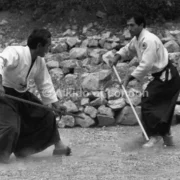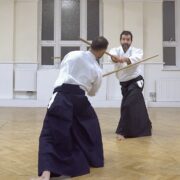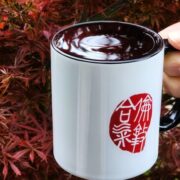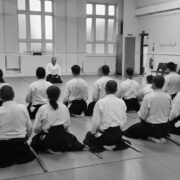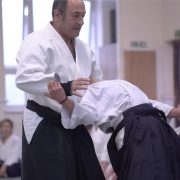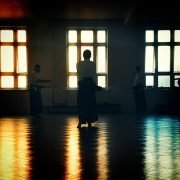Training and Aikido
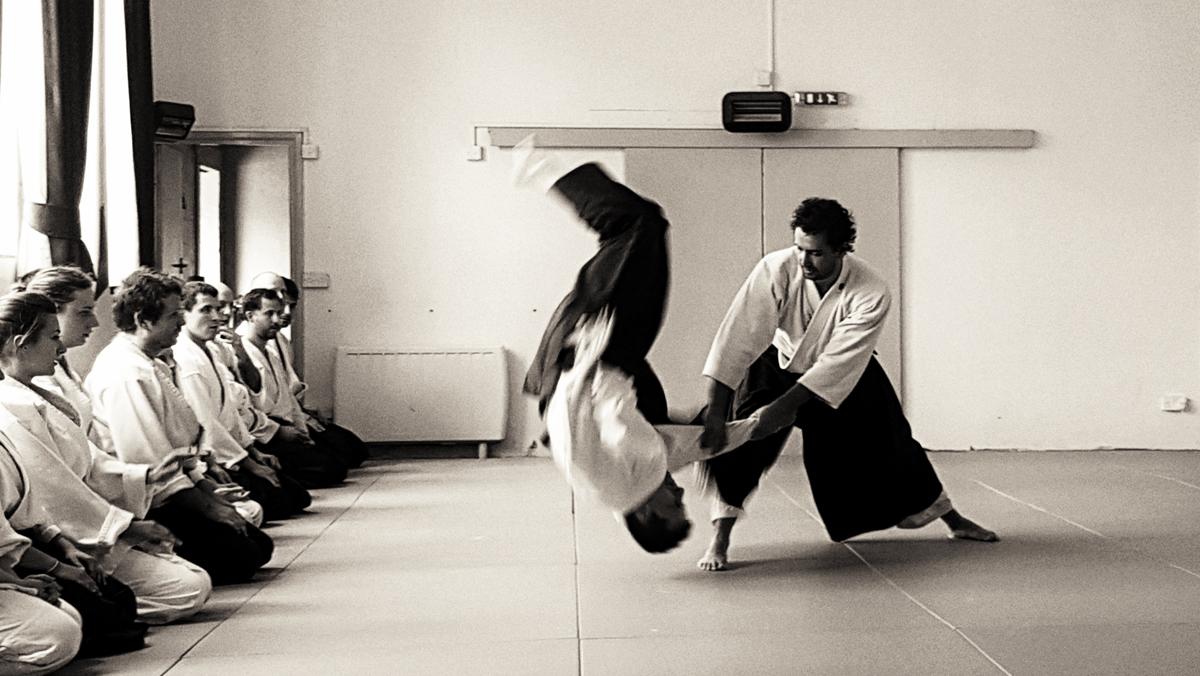
Learning to fall in Aikido, ukemi in Japanese, is half the training. Falling is not quite the right way to describe this aspect of training. Receiving would be more appropriate and much closer to the meaning. Receiving emphasises a way to take the throw, the pin and how to go with it, with the outcome that you still fall or get pinned etc. At first it seems awkward and even unnatural to some people. In time you learn to do it well , with efficiency and with safety . This is a core aspect of Aikido that defines it in the way one should approach training. It is a difficult concept for people in our highly competitive world to grasp. “What do you mean receive?” “What do you mean take it?” And “Why?” These are all good questions and worth asking. To answer them would be difficult if not impossible. The best and ultimately the only answer is in the doing, in the training. This way you can get stuck in and try it, give it a good go and find out for yourself. Of course it takes time as all good things do. There is work, sweat and the usual aches and pains during and after class. All of these are expected in all types of physical activity and Aikido is no different in that respect.
Training is also stimulating or should be. Energy is activated, it gets you moving and going in surprising ways. It is a great way to get into your body, switch off from the wider world and kick into a Japanese martial art. But remember you will still fall , take ukemi that is and most importantly you will get right back up again and repeat the process. Aikido can be complicated, technical and almost certain to make you feel confused while coming to grips with it . It can trigger thoughts of “hang on a moment, I’m smart, I’m educated, I should be able to do this easily.” “I’ve done this and that, I’m fit” This is understandable and yet the evidence is to the contrary. People struggle in various ways. Unsure of how to move on in this way of training. This is all ok, there is nothing wrong with that. Firstly Aikido needs patience, with it and also with yourself. It will come to you through an open minded approach and a genuine willingness to work at it.
It is here where switching on is most helpful. By bringing yourself to the class, engage with the other students and respond to the teaching. In many ways you are entering another world from the familiar one we are accustomed to. Even if this is only for an hour or two. By leaving that world all behind or as much of it as possible the aim of bringing your mind as well as your body into a session will increase your learning curve. You will of course get fit, more co-ordinated, move well and stay calm or calmer in demanding situations. This will all come in time but there is more to it than that. There is the opportunity to transform yourself, the chance to get into a groove, a zone if you want that is very rewarding. By getting into your skin, even your bones and raising your senses, lifting them to become more aware. This all helps towards becoming present, alive, energised and all while learning new skills. Non of this can take place without considering falling or ukemi and it only makes sense that if you do Aikido that you enjoy falling or taking ukemi. It is in the quality of your ukemi where you begin to understand how to do Aikido.

